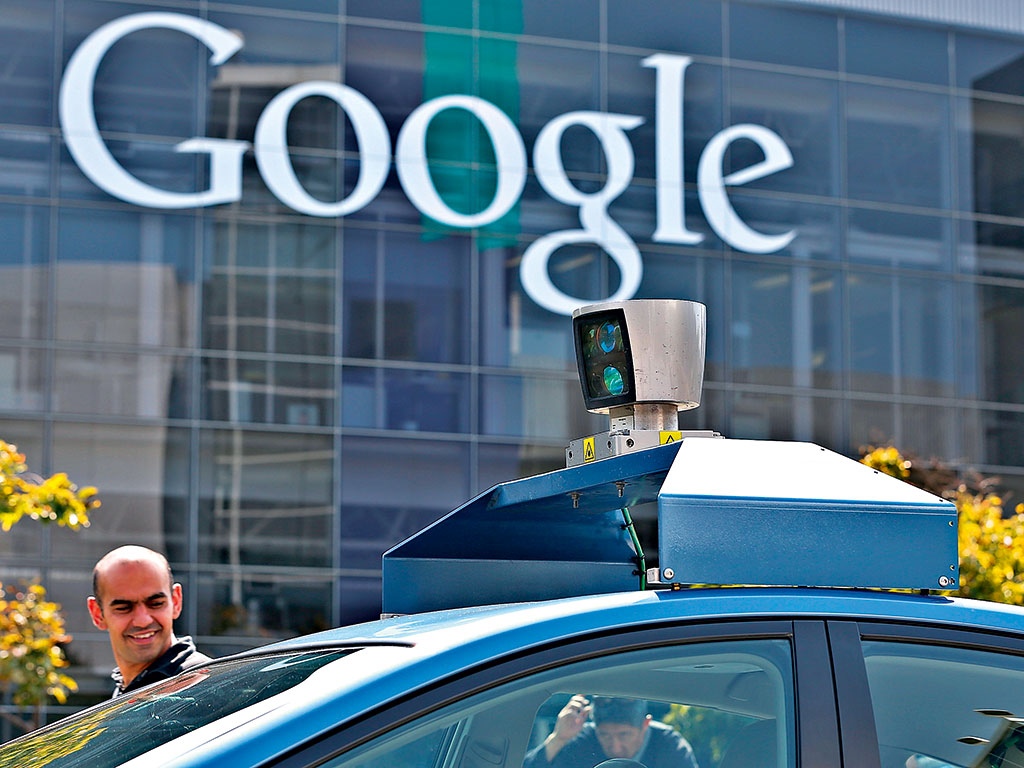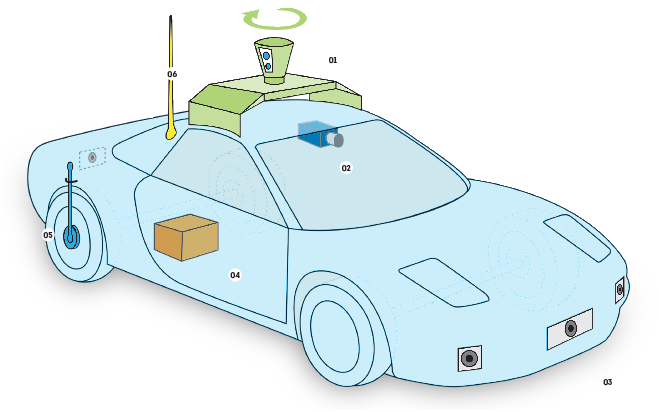Google’s driverless cars
Google hopes to release the technology for its driverless vehicles within five years – but first it needs to get some laws repealed. We look at the technology behind the automated automobile and why it’s so contentious

Google hopes to release the technology for its driverless vehicles within five years
The driverless revolution
It’s no secret Google has been working on driverless cars for about eight years now – although only officially since 2010. Sightings of these vehicles are becoming more frequent as engineers move them from the testing circuits out onto the roads of Silicon Valley. Currently, these autonomous cars are Toyotas fitted with cameras, lasers and sensors. A laser range finder is, conspicuously, fitted to the roof of the car: it generates a highly detailed 3D map of the surrounding area, aided by GPS, an inertial measurement unit, and a wheel encoder.
There is a camera near the rear view window that spots traffic lights sufficiently far in advance, and both front and rear bumpers have radars on them to aid the work of the laser. This technology allows the driverless cars to follow speed limits and navigate the best possible route to its destination. The technology costs between $75,000 and $85,000 per vehicle – more than the vehicle itself.
When do I get one?
Whether Google will develop its own vehicle or sell the technology to an existing automobile manufacturer is not yet known. Google has no experience of making cars so it is likely to seek a partnership with a manufacturer in order to implement the equipment – and that seems to be what’s delaying the project. It is thought automobile companies are reluctant to join for fear of liability if the technology fails.
Google Cars Product Manager Anthony Levandowski said: “I can’t tell you you’ll be able to have a Google car in your garage next year. We expect to release the technology in the next five years. In what form it gets released is still to be determined.” In August last year, rumours emerged of a Google Robo-Taxi: a driverless vehicle to pick up and drop off commuters on demand. This would be linked with an iPhone app, similar to current hail-a-cab apps such as Hailo and Uber.
A major problem is the technology is ahead of the law. Most federal and state automobile laws in the US assume a human operator. These need to be repealed before the technology can be commercialised. In 2012, Nevada became the first state to legalise the operation of autonomous cars on the roads. Florida and California (the latter the home of Google) have followed suit. Lobbyists from Google have been travelling around other states, targeting insurance companies in an attempt to gain state support for similar changes to the law.
Getting rid of the driver
There is a serious side to this project that goes beyond Google’s desire to be the first company to develop autonomous cars. Google founders Larry Page and Sergey Brin believe cars that drive themselves will improve road safety; the vehicles will react to hazards faster than humans and so potentially save lives. Chris Urmson, Lead Engineer on the project, said: “Technology is at its best when it makes people’s lives better… We’re using advanced computer science to try and make driving safer and more enjoyable”.
In testing, Google Cars have covered around 500,000 miles without a serious accident. Google employees drive these vehicles to and from work, though with some human intervention as the technology is not yet perfected. Two years ago, a Google Car went into the back of a Prius with enough force to knock it into two cars in front. However, Google maintains that, at the time of the accident, the car was under manual control and the accident was a simple case of human error.
Under the bonnet
How a self-driving car works
The most striking feature of the Google Car, the LIDAR (Light Ranging and Detection) is a rotating camera that sends out lasers. It uses the reflected light to build a 3D map of the car’s surroundings, up to a distance of 200m.
Performing much the same function as a mildly interested human motorist, the camera reads road signs, detects traffic lights, and keeps an eye out for pedestrians, cyclists, other motorists and similar obstacles.
Sensors mounted on the front and rear bumpers keep track of nearby objects, including other cars. This technology is already used in cars equipped with intelligent cruise control.

Information from the various sensors is fed into the car’s central computer. Here the data is analysed, and steering, acceleration and brakes adjusted accordingly. Importantly, the computer needs to understand not only traffic laws, but also the unspoken assumptions of road users.
An ultrasonic sensor mounted on the rear wheel monitors the car’s movements and uses the information to automatically update the vehicle’s position on the map.
A self-navigating car demands highly accurate positioning data. Information from GPS satellites is combined with readings from the car’s on-board instruments (i.e. tachometers, altimeters and gyroscopes) to make sure the car knows exactly where it is.













